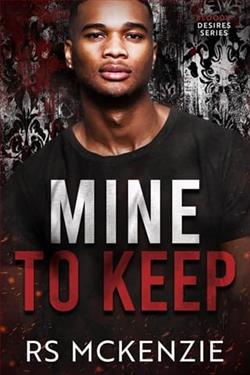Page 153 of Everything She Feared
“Tell me what they are. I won’t think you’re a bad person. I will always love you, but you have to tell me now.”
Katie shut her eyes while Sara waited.
“When Anna backed up to the edge, I told her to be careful. I did. But right then, just seeing her standing on the edge of the cliff, this thought jumped into my head. I don’t know why or how. It came like an electric shock, or lightning flash, like a voice and...”
“What was it? What did it say, Katie?”
“It said—what would it be like to push Anna over the edge and watch her fall?”
74
Seattle, Washington
The next morningPierce joined Acker and the others for a crucial meeting with Heidi Wong to respond to developments in the investigation of Anna Shaw’s death.
Wong’s office was in the newish Judge Patricia H. Clark Children and Family Justice Center in First Hill, south of Seattle University. Wong, facing a heavy court load, had requested they meet there.
Pierce, Benton, Tilden and Grotowski gathered in the lobby with Acker. After clearing security they found Wong working on her laptop at the end of a table in the conference room she’d reserved for the meeting.
“Hey, guys,” she said as they settled in.
Wong reached for her commuter cup next to her laptop, sipped some coffee, then set up the video call with two others from Juvenile Division downtown. The screen at the end of the room split, with Wong’s colleague, deputy prosecutor Edgar Leichter, and their boss, Victoria Mullen, who headed the division.
After the introductions, Mullen started.
“As Heidi has emphasized from the outset, charging a nine-year-old with murder is extremely rare and challenging,” she said. “The law presumes that children under twelve are incapable of committing a crime, unless this presumption can be removed. The offence has to be the magnitude of a homicide, and you must prove the child committed the act and understood what they did was wrong. All to say, our job here is to remove the presumption. I’ve been briefed on the background. Art, your people can update us on what you think are the new deciding elements.”
“Thanks, Victoria. I’m going to pass it to Kim Pierce, who’s leading.”
Pierce looked to her laptop and the notes she’d made last night working at home on the kitchen table.
“Katie Harmon’s psychologist was concerned enough to come forward with a number of troubling concerns. The first being the sketch, which we’ve shared with you.”
“You believe this could be considered an admission?” Mullen asked.
“Yes, taken with the other considerations, including Katie’s mother raising questions that have us assuming a history of violence in Katie’s family.”
“And what do we know about that?”
“We’ve learned that Katie was present when a boy drowned in Canada two years ago after a verbal disagreement at a community pool. We’re expecting more details from Canadian police.”
“Alright,” Mullen said. “Where are we on all the other aspects of the investigation?”
“You’ve read the ME’s report?” Acker said.
“We have,” Mullen said.
“We’re confident we can recover prints from the rock to compare with Katie’s,” Pierce said.
“Have you proven that Katie can lift the rock that is considered to be the murder weapon?” Mullen asked.
“We’re confident she had the strength to lift the rock,” Acker said.
“Other suspects? And reasonable doubt?”
“We’ve canvassed and interviewed, and in every case possible, have run background and checked fingerprints. A few forensic aspects are being completed, but we’ve essentially ruled out all other possibilities,” Acker said. “We’ve recovered Anna Shaw’s phone, but it’s too damaged to be of use.”
Mullen glanced at her notes.















